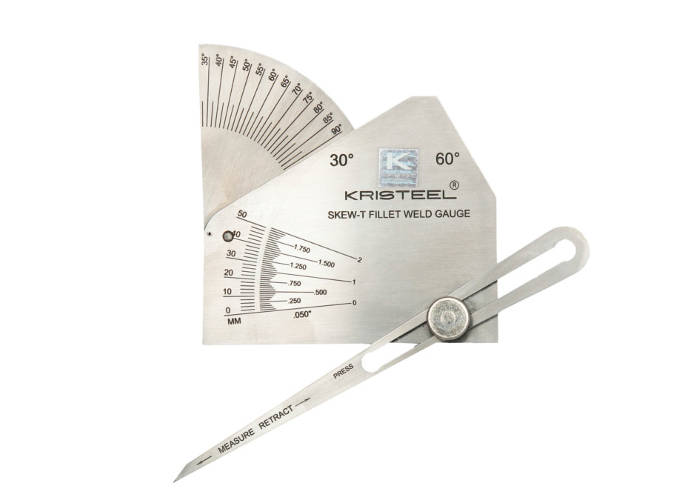How to Accomplish Accuracy with Gauge Fillet Welds in Your Jobs
How to Accomplish Accuracy with Gauge Fillet Welds in Your Jobs
Blog Article
Fillet Weld Design Methods: Maximizing Joint Performance and Looks for Structural Stability
In the realm of architectural engineering and construction, the importance of fillet weld style techniques can not be overstated. By meticulously taking into consideration factors such as weld account optimization, material option, joint preparation methods, welding process performance, and visual enhancement engineers, makers and approaches can achieve a harmonious equilibrium between functionality and appearance in their welded frameworks.
Weld Profile Optimization


Attaining an ideal weld account involves a meticulous factor to consider of factors such as material thickness, joint setup, welding placement, and wanted welding rate. Additionally, the choice of suitable welding parameters, such as voltage, existing, and travel speed, is basic in regulating the form and dimensions of the fillet weld. Utilizing sophisticated welding techniques, such as pulse welding or robotic welding, can even more fine-tune the weld account to meet details design needs and quality standards.
Basically, weld profile optimization is a fundamental element of fillet weld style that directly influences the general efficiency and dependability of welded joints in architectural applications.
Material Selection Considerations
When considering material selection for fillet weld design, the compatibility of the base metals is a critical factor affecting the architectural integrity of the joint. It is vital to pick materials that not just bonded together properly but also have similar mechanical properties to ensure the lots is uniformly distributed between the base and the weld metals. Welding materials with vastly various residential properties can cause concerns such as stress and anxiety focus, early joint failing, or fracturing.
In addition, the atmosphere in which the bonded structure will certainly operate should be considered when choosing products. Aspects like rust resistance, temperature variations, and direct exposure to chemicals can all impact the longevity and performance of the weld joint. By picking products that appropriate for the desired application and setting, the total sturdiness and dependability of the bonded joint can be substantially boosted.
Consequently, complete consideration of product compatibility and environmental aspects is extremely important in guaranteeing the weld joint's stamina, resilience, and total structural honesty.

Joint Prep Work Strategies
Taking into consideration the critical function product selection plays in making certain the architectural stability of fillet weld joints, it is important to execute exact joint preparation techniques that enhance the connection in between the base metals. Joint prep work is an essential action that directly influences the top quality and toughness of the weld. One fundamental technique is the cleaning of base metals to remove any contaminants like corrosion, oil, or paint that can endanger the weld's integrity. This can be attained through techniques such as grinding, cord cleaning, or chemical cleansing.
Moreover, proper fit-up of the joint is essential to ensure uniform circulation of the welding material and avoid flaws like insufficient penetration or extreme build-up. Beveling the sides of the base steels can develop investigate this site a groove that enables deeper weld penetration and a more powerful bond. Furthermore, tack welding the components in position before the last weld assists preserve positioning and decreases distortion during the welding procedure. By meticulously adhering to these joint prep work methods, welders can improve the total performance and aesthetics of fillet weld joints while ensuring architectural strength.
Welding Refine Performance
Effective welding processes are important for accomplishing optimum efficiency and high quality in fillet weld construction. One crucial aspect of boosting welding process effectiveness is selecting the appropriate welding strategy. Elements such as product type, joint design, and welding placement should be meticulously taken into consideration to establish the most ideal technique. Processes like gas metal arc welding (GMAW) and flux-cored arc welding (FCAW) are generally made use of for fillet welds due to their convenience and speed.
Regular calibration of welding machines, assessment of consumables, and Source maintenance of welding torches can prevent downtime and remodel, inevitably saving time and sources. Well-trained welders are much more adept at adjusting specifications, troubleshooting issues, and preserving constant weld top quality.
Aesthetic Enhancement Methods
To optimize the top quality of fillet weld construction, executing aesthetic enhancement methods can play an essential function in making sure precision and precision throughout the welding process. Aesthetic aids such as weld size evaluates and magnifying lenses can assist in examining weld profiles and measurements precisely. By integrating these aesthetic improvement techniques right into the welding procedure, welders can achieve not just structurally audio fillet welds but also aesthetically attractive results that meet market standards.

Verdict
Finally, optimizing fillet weld layout includes careful consideration of weld profile, product selection, joint prep work, welding process performance, and aesthetic enhancement methods. By carrying out these methods, structural integrity can be improved while also attaining aesthetic appeal. It is very important to focus on both my sources performance and appearances in fillet weld layout to guarantee the overall top quality and sturdiness of the joint.
By diligently thinking about elements such as weld profile optimization, material choice, joint prep work methods, welding procedure effectiveness, and aesthetic improvement fabricators, engineers and techniques can attain an unified equilibrium between functionality and appearance in their welded frameworks.In the realm of fillet weld layout, optimizing the weld profile plays a vital function in making sure structural stability and efficiency. The weld account, which includes the size and shape of the weld cross-section, directly influences the circulation of stress and load-bearing capacity within the joint. It is important to choose products that not only bonded with each other properly however likewise have comparable mechanical residential or commercial properties to ensure the tons is uniformly dispersed in between the base and the weld steels - Gauge Fillet Weld.In final thought, optimizing fillet weld style involves cautious consideration of weld profile, material selection, joint preparation, welding process effectiveness, and aesthetic improvement approaches
Report this page